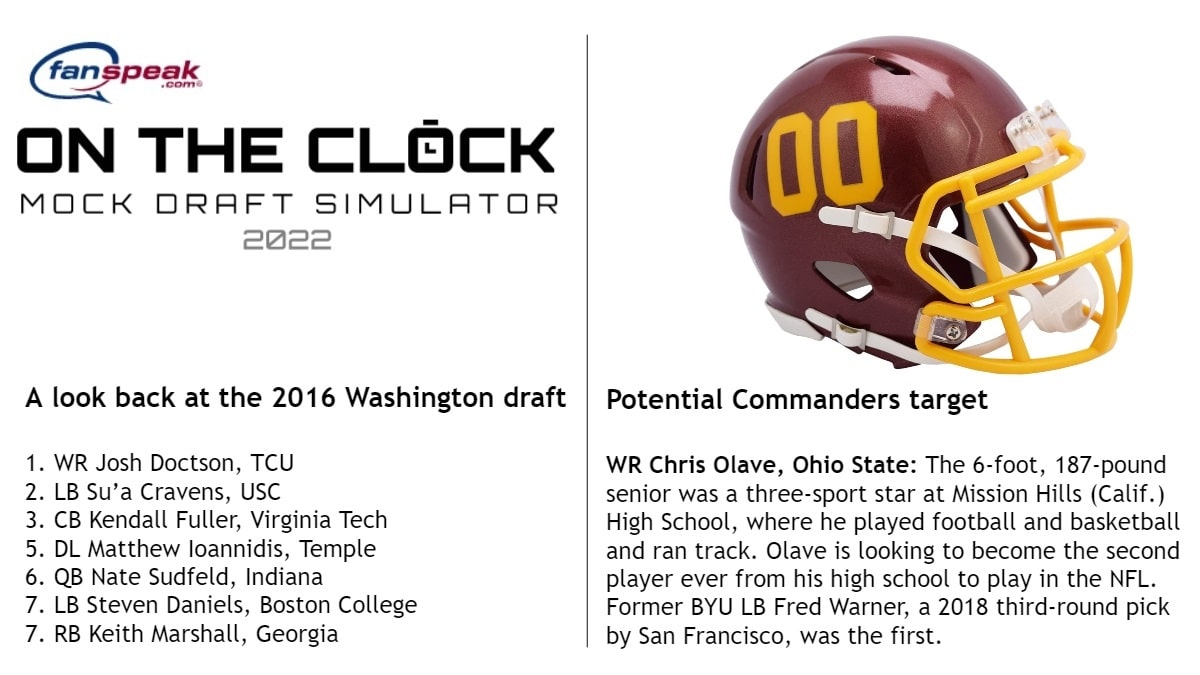Kyle Shanahan’s In-Game Adjustments Key To Redskins Success
The Redskins running game was one of the best in the NFL last year. Some will attribute that to the addition of the read-option, others will say Morris ran the zone blocking scheme perfectly. But one of the most underrated aspects was offensive coordinator Kyle Shanahan’s ability to adjust his offense during the game to attack whatever look the defense was giving him. The Redskins have an arsenal of running plays with which they can attack different defenses, and Kyle Shanahan did an excellent job switching between them. One of the best examples I can think off was against the Tampa Bay Buccaneers in week four.

Tampa Bay had one of the best run defenses in the NFL last year. They allowed the least rushing yards, averaging just 82.5 yards given up per game at a league best 3.5 yards per carry. Their scheme helped them achieve this success. They run a 4-3, but use some 3-4 principles. Look at the picture above. It looks almost like a 3-4 defense, with five defenders on the line of scrimmage.

What the Redskins want to do is run one of their typical outside zone stretch run play. The offensive linemen will try to get the defense moving from sideline to sideline, creating cutback lanes for Morris to exploit.

In response, Tampa Bay will crash their defensive linemen inside and allow their linebackers to flow to the football.

Roy Miller will act as a 3-4 nose tackle here, taking up two blocks. Kory Lichtensteiger is assigned to block him, but Miller attacks Will Montgomery as well. Right guard Chris Chester leaves Gerald McCoy to Montgomery, but Montgomery is occupied with Miller.

McCoy penetrates and gives fullback Darrel Young a no-win situation. Young has his assigned man to block already, but McCoy is there too. With the offensive line focus on McCoy, nobody is able to get up to the second level, leaving the linebackers to roam free.

Morris has to try and bounce outside early and break a few tackles. He escapes one tackle, but the linebackers are able to run free and clean up. The Redskins lose three yards on the play.
But Kyle Shanahan recognizes the scheme and is able to adjust quickly.

The Bucs give the Redskins a very similar look to the last play we saw. But this time, the Redskins have a different run called.

The Redskins run a counter play. It’s designed to look like a run behind the left tackle, before Morris suddenly cuts it back across the line. Tyler Polumbus and tight end Fred Davis will force their blocks outside to the right, while Lichtensteiger and Williams will force their blocks outside to the left. Chester and Montgomery, meanwhile, will tandem block the nose tackle.

With Morris and Young starting off flowing together, the linebackers rush down to that side to plug up the running lanes.

As the linebackers rush down, Chester and Montgomery work together to force the nose tackle to their left, creating the cutback lane for Morris.

As Morris receives the toss from Griffin, the offensive line have walled off a majority of the defense.

Chester is able to peel off the nose tackle and block the linebacker, ensuring Morris a clean lane to run into.

Joshua Morgan makes a terrific block on safety Mark Barron, allowing Morris to get through the hole and into the secondary and pick up 17 yards on the run.
These kinds of adjustments are key to the success of the Redskins run game. If a team sets out to stop one specific type of run, like the outside zone, then Kyle Shanahan is perfectly willing and able to adjust on the fly and call other run plays. This allows the Redskins to script their first 15 or so plays, see how the defense reacts to their different types of runs, and attack as they see fit.


